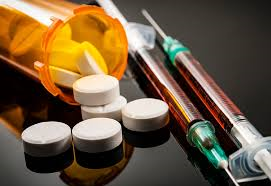Commonly Abused Substances
Marijuana
About
Marijuana is the dried form of the plant Cannabis sativa or Cannabis Cannabis indica plant. People use marijuana by smoking, eating, drinking, or inhaling it. The plant contains the mind altering chemical THC and other related compounds. THC over activates certain brain cell receptors, resulting in effects such as altered senses, change in mood, impaired body movement, difficulty with thinking and problem solving, and impaired memory and learning.
Substance Abuse Disorder and Treatment
Marijuana can lead to a substance use disorder, which can develop into an addiction in severe cases. There aren’t any reports of teens and adults dying from using marijuana alone, but marijuana use can cause some uncomfortable side effects such as anxiety and paranoia and, in rare cases, extreme psychotic reactions. No medications are currently available to treat marijuana use disorder, but behavioral support can be effective.

Electronic Cigarettes
About
Electronic cigarettes are battery-operated devices that people can use to inhale an aerosol, which typically contains nicotine(though not always), flavorings, and other chemicals. In many e-cigarettes, puffing activates the battery-powered heating device, which vaporizes the liquid in the cartridge or reservoir. The person then inhales the resulting aerosol or vapor (called vaping). Nicotine stimulates the adrenal glands to release the hormone epinephrine(adrenaline) and increases the levels of a chemical messenger in the brain called dopamine.
Addiction and Treatment
E-cigarettes can lead to nicotine addiction and increased risk for addiction to other drugs. Please refer to our health services page for more information on addiction treatment.

Tobacco
About
Tobacco is a plant used for its leaves, which are dried and fermented before being put in tobacco products. People can smoke, chew, or sniff tobacco. Tobacco contains nicotine, the ingredient that can lead to addiction. Nicotine acts in the brain by stimulating the adrenal glands to release the hormone epinephrine(adrenaline) and by increasing levels of the chemical messenger dopamine. Tobacco smoking can lead to lung cancer, mouth cancer, leukemia, cataracts, pneumonia, and other related diseases.
Addiction and Treatment
Both behavioral treatments and medication can help people quit smoking, but the combination of medication with counseling is more effective than either alone. AU SAP provides pharmaceuticals and counseling. Please refer to our health services page for more information on treatment.

Opioids
About
Opioids are a class of drugs that include the illegal drug heroin, synthetic opioids such as fentanyl, and pain relievers available legally by prescription, such as oxycodone (OxyContin®), hydrocodone (Vicodin®), codeine, morphine, and many others. All Opioids are chemically related and interact with opioid receptors in nerve cells in the body and brain. Opioid pain relievers are generally safe when taken for a short time and as prescribed by a doctor. However, regular use — even as prescribed by a doctor — can lead to dependence and, when misused, opioid pain relievers can lead to addiction, incidents, and deaths.
Addiction and Treatment
Effective medications exist to treat opioid use disorders including methadone, buprenorphine, and naltrexone. In particular, a buprenorphine/naloxone combination and an extended release naltrexone formulation are similarly effective in treating opioid addiction. However, naltrexone requires full detoxification, so initiating treatment among active users was more difficult. Nonetheless, these medications help many people recover from opioid addiction.

